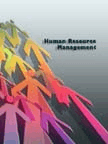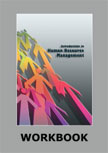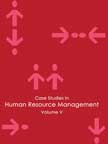Xerox - People Problems
|
|
ICMR HOME | Case Studies Collection
Case Details:
Case Code : HROB015
Case Length : 09 Pages
Period : 1998 - 2001
Pub Date : 2002
Teaching Note : Available
Organization : Xerox Corporation
Industry : Office Automation Products
Countries : USA
To download Xerox - People Problems case study
(Case Code: HROB015) click on the button below, and select the case from the list of available cases:

Price:
For delivery in electronic format: Rs. 300;
For delivery through courier (within India): Rs. 300 + Rs. 25 for Shipping & Handling Charges
» Human Resource and Organization Behavior Case Studies
» HRM Short Case Studies
» View Detailed Pricing Info
» How To Order This Case
» Business Case Studies
» Area Specific Case Studies
» Industry Wise Case Studies
» Company Wise Case Studies

Please note:
This case study was compiled from published sources, and is intended to be used as a basis for class discussion. It is not intended to illustrate either effective or ineffective handling of a management situation. Nor is it a primary information source.
Chat with us

Please leave your feedback

|
|




<< Previous
Background Note
|
The Xerox story goes back to 1938, when Chester Carlson, a patent attorney and
part-time inventor, made the first xerographic image in the US. Carlson
struggled for over five years to sell the invention, as many companies did not
believe there was a market for it.
Finally, in 1944, the Battelle Memorial Institute in Columbus, Ohio, contracted
with Carlson to refine his new process, which Carlson called 'electrophotography.'
Three years later, The Haloid Company, maker of photographic paper, approached
Battelle and obtained a license to develop and market a copying machine based on
Carlson's technology.
|

|
Haloid later obtained all rights to Carlson's invention and registered the
'Xerox' trademark in 1948. Buoyed by the success of the Xerox copiers, Haloid changed its name to Haloid Xerox Inc in 1958, and to The Xerox
Corporation in 1961.
|
|
Xerox was listed on the New York Stock Exchange in
1961 and on the Chicago Stock Exchange in 1990. It is also
traded on the Boston, Cincinnati, Pacific Coast, Philadelphia,
London and Switzerland exchanges. The strong demand for Xerox's
products led the company from strength to strength and revenues
soared from $37 million in 1960 to $268 million in 1965.
Throughout the 1960s, Xerox grew by acquiring many companies
including University Microfilms, Micro-Systems, Electro-Optical
Systems, Basic Systems and Ginn and Company. In 1962, Fuji Xerox
Co., Ltd. was launched as a joint venture of Xerox and Fuji Photo
Film. Xerox acquired a majority stake (51.2%) in Rank Xerox in 1969. |
During the late 1960s and the early 1970s, Xerox diversified
into information technology business by acquiring Scientific Data Systems
(makers of time-sharing and scientific computers), Daconics (which made shared
logic and word processing systems using minicomputers), and Vesetec (producers
of electrostatic printers and plotters).
In 1969, it set up a corporate R&D facility, the Palo Alto Research Center (PARC),
to develop in-house technologies. In the 1970s, Xerox focused on introducing new
and more efficient models to retain its share of the reprographic market and
meet competition from US and Japanese companies. While the company's revenues
increased from $ 698 million in 1966 to $ 4.4 billion in 1976, profits increased
five-fold from $ 83 million in 1966 to $ 407 million in 1977...
Excerpts >>
|
|










